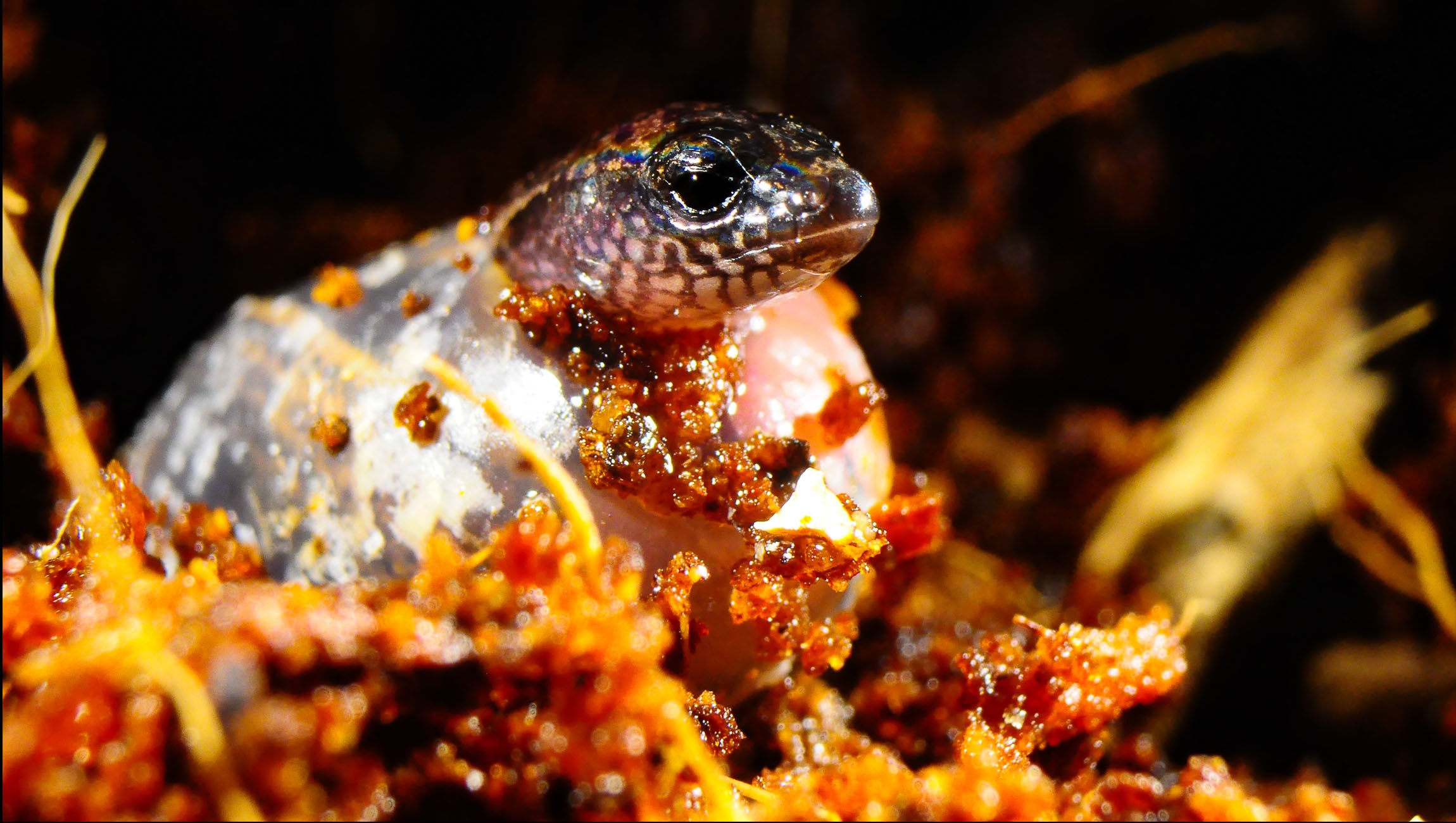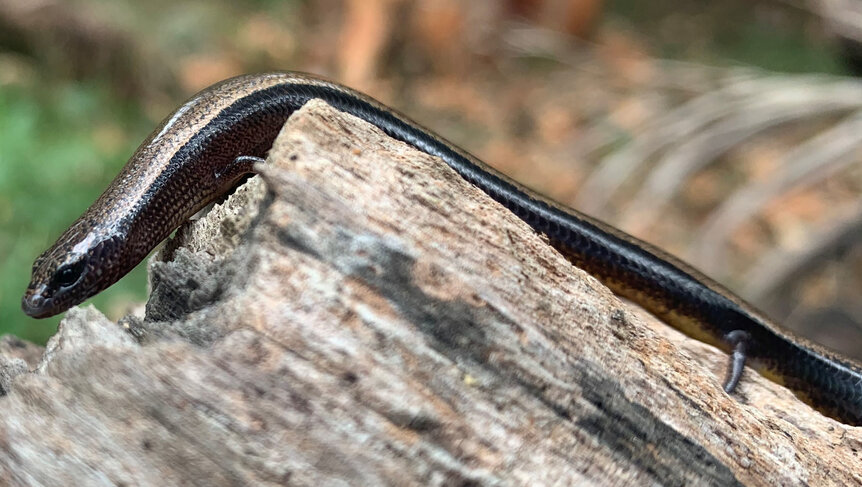Create a free profile to get unlimited access to exclusive videos, sweepstakes, and more!
Thought evolution was ancient? This lizard is evolving, like, right now

Evolution is usually something that science textbooks refer to as having happened however many million years ago. Then you have a freak of nature that defies whatever you learned in Bio 101.
The three-toed skink gives birth to live young. Wait, it lays eggs. No, it lays eggs and also gives birth to live young.
As biologists Dr. Charles Foster and Dr. Camilla Whittington of the University of Sydney, who recently published a paper in Biology Letters, found out, this bizarre lizard was literally evolving as they studied its DNA. Their research team was in for a shock when one of the normally live-bearing females laid eggs. As if that wasn’t unexpected enough, she gave birth again a few weeks later.
“What is clear in biology is that evolution is a near-constant process. Organisms are always changing, whether they are sharks, humans, or the three-toed skink,” Foster, the paper's lead author, told SYFY WIRE. “It’s likely that both egg-laying and live-bearing three-toed skinks will continue to evolve over time.”
This indecisive reptile is one of only a few species known to be bimodally reproductive. This rare phenomenon means it may either lay eggs or give birth to live young, but never before have scientists observed a vertebrate doing both during one pregnancy.
Environment can be a determining factor for whether or not it’s going to be a birthday or a hatchday. Three-toed skinks are native to Australia’s east coast, and it has been observed that those crawling around on the lower ground around Sydney lay eggs, while those that live in higher and cooler areas of New South Wales tend to bear live young. So why the transition from oviparity (egg laying) to viviparity (live birth)?
“Viviparity allows mothers to have greater control over the development of embryos,” Foster explained. “In general, this means that viviparity might be favored in situations where it’s expected that the embryo has more chance to develop to maturity with the mother’s help as opposed to developing externally inside an egg. For example, laid eggs might be more susceptible to poaching by predators, or to fluctuations in environmental conditions such as water or temperature.”
The earliest vertebrates that emerged — like the textbooks say, millions of years ago — laid eggs. Squamate reptiles (lizards and snakes) are of so much interest to study the evolution of viviparity since it has evolved at least 115 times in these creatures. Live births started to appear in these reptiles when some species started holding the eggs, in which embryos were developing, inside their bodies for longer and longer, until these species started giving birth to live offspring. Going back to how environmental conditions have separated the skinks that lay eggs from those that give birth, their bodies must react to where they prefer to hang out.
“Our work has shown that the egg-laying populations closer to Sydney are more of a transitional form between true egg-laying and live birth. It’s possible that the Sydney populations are either in the process of transitioning from egg-laying to live birth, or from live birth back to 'true' egg-laying,” said Foster.
What is even weirder is that egg coverings for both oviparous and viviparous embroys are produced the same way in a female skink’s body. Viviparity changes things such as the glands that produce eggs and eggshells in the female, as well as blood flow, metabolism, and how long it takes for embryos to develop; but it may go back and forth if it has evolved recently in a previously egg-laying species. These are the rare species that Foster and Whittington feel are the most ideal for studying the likelihood of change in how snakes and lizards reproduce. They aren’t going to be done evolving anytime soon, either.
So how is the three-toed skink most likely to create more skinks in the future?
“I would say that the forecast of more variable environmental conditions induced by climate change will favor live birth in the three-toed skink, since mothers will have more control over embryonic development compared to eggs developing in the fluctuating external environment,” Foster said.
Millions of years from now, maybe someone will know.
(via University of Sydney/Biology Letters)



























